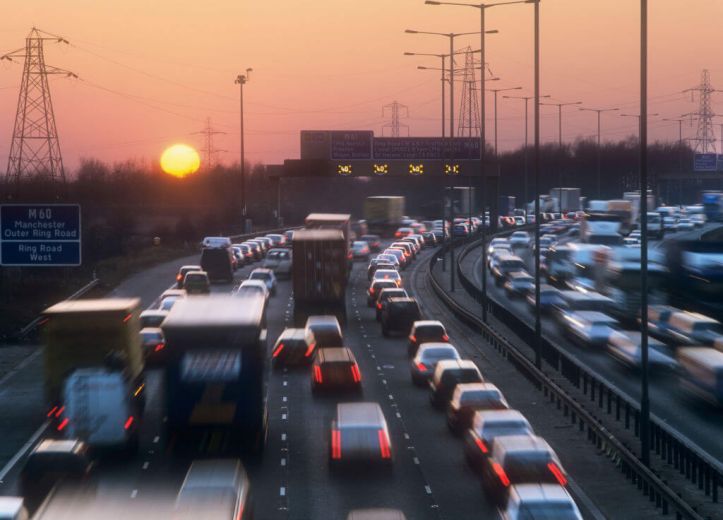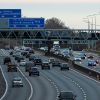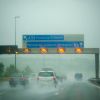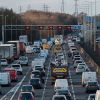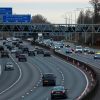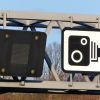National Highways announced that it was on course to upgrade almost 100 safety cameras to enable automatic detection of vehicles that ignore red X lane closure signals by the end of September this year.
This is designed to increase compliance with the red X, helping to ensure the safety of road users in difficulty, or road workers and emergency services who are using the inside lane – or old hard shoulder.
An extra 330 signs are currently being installed to inform drivers of the distance to the next place to stop in the event of a mechanical problem or emergency.
National Highways is also on track to complete the roll-out of radar-based technology that can spot a stopped or broken-down vehicle on over 200 miles of All Lane Running (ALR) motorway by the end of September 2022.
The commitments are made in the Smart Motorway Stocktake – Second Year Progress Report published today by National Highways.
What is a smart Motorway?
Smart motorways without a hard shoulder have been developed to create more space on our busiest roads – improving the flow of freight around the county and ensuring people can get where they need to be as quickly and reliably as possible.
They are fitted with technology and features not seen on conventional motorways such as emergency areas (EAs) set-back from the carriageway, radar-based Stopped Vehicle Detection (SVD) and Red X signals on gantries to close live lanes.
Currently, the SVD flags around 1,000 incidents a month – however, around 10% of them are not currently being spotted.
In summary, there are three different types of smart motorway; ALR – no hard shoulder; Dynamic Hard Shoulder (DHS) – where the hard shoulder is opened in busier periods; and Controlled – a permanent hard shoulder with traffic controlled via variable speed limits.
Are they safer?
According to the Smart Motorway Stocktake – Second Year Progress Report published today by National Highways, between 2016 and 2020 there were 0.06 serious injuries or deaths per billion miles travelled on controlled smart motorways.
On normal motorways, the figure rose slightly to 0.09. However, they were more than double – 0.19 – on ALR smart motorways.
With regard to minor incidents that were recorded on motorways across the UK, the rate on controlled motorways was 0.2; 0.18 on traditional motorways; and on ALR motorways, that figure was 0.33.
Reacting to the news, RAC head of roads policy Nicholas Lyes said: “While good progress is being made in upgrading existing smart motorways by installing stopped vehicle detection technology and more refuge area signage, the key question is whether these changes are enough to reassure drivers, many of whom firmly believe that removing the hard shoulder compromises safety.
“While the Government is keen to point out that all-lane-running smart motorways tend to have a better overall safety record than conventional motorways, the safety comparisons with other types of smart motorways are less impressive.”
What to do if you break down on a smart motorway?
Your car may break down on a smart motorway without a hard shoulder. If you break down on one of these roads you should:
1. Try to take your car off the motorway
Move to the left-hand lane with your hazard lights on, then exit the motorway at the nearest junction, service station, or emergency refuge area – you can find these safe sections of road by following orange SOS signs.
2. Leave your car safely and stand away from traffic
Turn on your hazards and if you’ve broken down at night or visibility is low, use your sidelights too. Make sure you and your passengers leave the car using the left-hand door, wearing hi-vis jackets if you have them. Climb over the safety barriers to distance yourself from passing traffic. Wait for help here.
3. Use the emergency phone service
You MUST use the emergency telephone found in the emergency refuge area and give as much information to the operator as you can. You can ask the highways agency to contact the RAC on your behalf. When you’ve completed the call, stand behind the emergency barrier.
Do not attempt any repairs yourself; place a warning triangle anywhere; or stand on the carriageway, or between your car and other passing vehicles.
Read our full guide what you should do if your car breaks down on a motorway for some useful tips for you and your passengers.

RAC sale – up to 33% off*
• Roadside cover from £5.29 a month†
• We get to most breakdowns in 60 mins or less
• Our patrols fix 4/5 breakdowns on the spot


